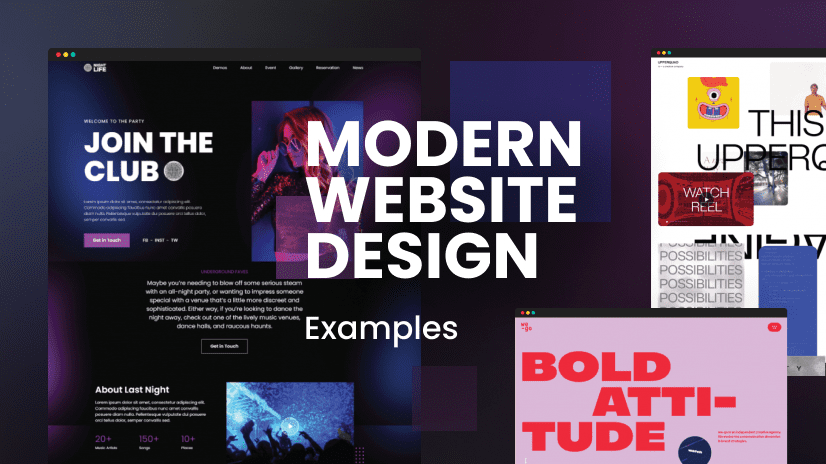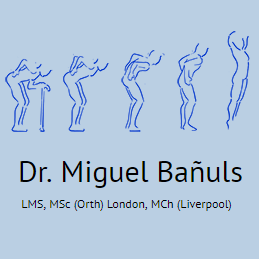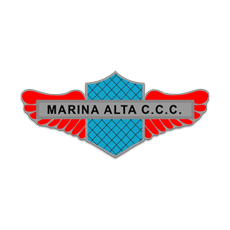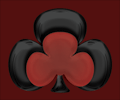Modern Website Design is increasingly vital in a digital landscape where user experience reigns supreme. As we venture into 2025, the latest website design trends prioritize simplicity and functionality, merging minimalist web design with clean website layouts to enhance user engagement. Companies must embrace dynamic web design examples that not only captivate audiences but also drive conversions and foster brand loyalty. Effective UI UX design plays a crucial role in creating seamless interactions, ensuring that visitors find what they need effortlessly. This exploration of modern aesthetics will highlight key inspirations and methodologies that define the cutting-edge of contemporary web design.
Contemporary web design encompasses a wide array of cutting-edge aesthetics and practices. In today’s competitive marketplace, effective digital experiences are crafted through user-centric methodologies that prioritize clarity and accessibility. The principles of sleek layout design and engaging user interaction come together to form a cohesive digital presence. Utilizing trends that reflect prevailing consumer behaviors, these modern design philosophies pave the way for impactful user experiences. By examining leading examples in website creation, we can discover innovative strategies that enhance engagement and showcase the importance of a well-designed online platform.
Why Modern Website Design Matters More Than Ever
In the fast-paced digital landscape of 2025, the importance of modern website design cannot be overstated. Visitors form opinions about a website within just three seconds of arriving, a timeframe that leaves little room for error. Well-crafted design elements like clean layouts and purposeful whitespace are essential in capturing and retaining user attention. These factors, when combined with streamlined functionality, create a compelling user experience that translates into tangible business benefits, such as enhanced conversion rates and reduced bounce rates.
Moreover, exceptional modern website design serves not only aesthetic purposes but also fosters brand credibility in an increasingly crowded market. As brands compete for visibility and consumer trust, the quality of their digital presence becomes a critical factor. The following sections will delve into inspiring examples of modern website designs that set contemporary standards. Each example highlights unique approaches to clean design, stirring creativity in designers and business owners alike as they aim to elevate their online presence.
Essential Elements of Modern Web Design
At its core, modern web design is characterized by several essential elements that enhance user interaction and engagement. Typography stands out as a crucial component; designers opt for clear and legible fonts that highlight content without overwhelming the viewer. Hierarchical typography guides users naturally through information, promoting a seamless flow from headings to actionable links. Moreover, in the best modern website designs of 2025, color palettes are carefully curated, often comprising two to three primary colors that collaborate harmoniously to enhance readability and brand identity.
Simplicity in navigation is yet another hallmark of contemporary design. Modern websites prioritize intuitive navigation systems that are easily accessible, allowing users to interact without frustration. By aligning these fundamental elements, designers create cohesive and engaging experiences that align seamlessly with user expectations, ensuring that modern websites remain both visually striking and functionally robust.
Minimalist Website Design Examples
The minimalist approach to website design illustrates the principle of ‘less is more’, showcasing how simplicity can lead to impactful visuals and effective communication. Portfolio websites exemplify this design philosophy, aptly utilizing high-quality images with minimal text. In these designs, the artwork often takes center stage, narrating the story of creativity without clutter. Subtle navigation, often executed through simple text or minimalist iconography, ensures that users can easily explore without distractions.
On the other hand, e-commerce websites adopting minimalist designs focus on product features rather than unnecessary elements. The standout product photography captivates potential buyers, steering attention away from visual clutter and highlighting key features. By emphasizing clean visuals and straightforward content, minimalist designs not only engage users but also emphasize clear value propositions, paving the way for streamlined purchasing processes that enhance user satisfaction.
Bold and Dynamic Modern Designs
As minimalism claims its share of the spotlight in modern web design, bold and dynamic styles emerge as potent alternatives, capturing attention through striking implements. These designs often feature vivid visuals, innovative interaction elements, and unusually styled layouts that provoke excitement and intrigue. One of the most notable techniques includes the use of video backgrounds that create a visceral experience for visitors, instantly drawing them into the brand narrative.
Furthermore, the use of asymmetrical layouts ushers in a fresh take on traditional design grids, allowing for creativity and uniqueness that distinguishes a brand’s online presence. Bold designs thrive on interactive elements, integrating hover effects and scroll-triggered animations that engage users more actively. By blending aesthetics with interactivity, dynamic designs foster not only eye-catching visuals but also deeper connections with users, enhancing their overall online journey.
Clean Homepage Design Innovations
The evolution of clean homepage design centers around delivering immediate value, captivating visitors within the first impression they form. Effective modern homepages strategically showcase core information above the fold, encouraging users to delve deeper with engaging calls-to-action. Hero sections have come into play as a vital component, balancing bold imagery with concise, impactful messaging to ensure users grasp essential information immediately.
Social proof, such as customer testimonials and usage statistics, seamlessly integrates into clean homepage designs, enhancing credibility and encouraging visitor trust. This blend of visual impact and informative content is crucial as it acts not only as a welcoming introduction but also as a persuasive invitation to explore further, reflecting the innovative approaches to clean design that define modern websites.
Industry-Specific Design Approaches
Different industries necessitate distinct approaches to modern website design, reflecting the unique needs and expectations of their target audiences. For instance, technology companies often embrace avant-garde design trends, prioritizing sleek, cutting-edge aesthetics that resonate with innovation. Their websites frequently feature dynamic interfaces and engaging visuals that convey their commitment to progress and modernity.
Conversely, healthcare organizations lean towards professionalism and trust-building in their designs, favoring accessible layouts that evoke confidence and reassurance. Color choices and typography reflect stability and compassion, inviting users to engage with content that addresses their health needs. Creative agencies present a different narrative through portfolio-driven designs, showcasing their talents and successfully inviting clients to immerse themselves in their creative prowess.
Modern Design Trends for 2025
As we look toward 2025, several modern design trends are poised to shape the landscape of effective website design. One prominent trend is the adoption of dark mode features, which enhance user comfort and appeal, catering to the increasing demand for aesthetic versatility. Not only do dark themes reduce eye strain, but they also add a layer of sophistication and elegance to digital experiences.
Moreover, sustainable design principles are gaining traction, urging designers to consider environmentally-friendly practices in their web development processes. This includes maximizing energy efficiency and reducing carbon footprints through thoughtful design choices. Additionally, an ongoing commitment to accessibility continues to drive modern web design, ensuring that all users, regardless of ability, can navigate and benefit from online spaces with ease.
Implementation Strategies
Successfully translating modern website design examples into practical implementations requires a thought-out strategy that balances visual allure with technical competence. A responsive design approach remains imperative, ensuring that websites deliver consistent and satisfying user experiences across devices, from desktops to mobile phones. This commitment to responsiveness not only improves user satisfaction but also bolsters search engine optimization.
Incorporating performance optimization early in the design process is also crucial; this aligns aesthetic goals with the functional aspects that influence user experience. Factors such as loading times, image sizes, and overall site speed can significantly affect user engagement. By prioritizing these implementation strategies, businesses can realize the full potential of modern design principles while achieving outstanding results.
Frequently Asked Questions
As questions about modern web design practices abound, it’s vital to understand what distinguishes a modern design in 2025. Key features include clean layouts, intuitive navigation, and a steadfast focus on enhancing user experience. These core principles serve as the foundation for building websites that not only look great but perform exceptionally well in capturing user interest.
Another common inquiry relates to the benefits of minimalist website designs in increasing engagement. By significantly reducing cognitive load through streamlined aesthetics, minimalist designs empower users to navigate information without feeling overwhelmed. Essential elements ensuring clean modern website design encapsulate responsive layouts, clear typography hierarchies, and a strategic application of white space — all crucial for fostering inviting digital spaces.
Transform Your Digital Presence with Modern Design
Modern website design examples serve as guiding templates for businesses aiming to construct engaging digital experiences. The showcased designs within this guide illustrate a variety of contemporary approaches, providing different insights into how businesses can elevate their digital presence. As we progress further into 2025, innovative design practices will continue to evolve, influenced by technological advancements and user feedback.
Therefore, ongoing education and adaptation are paramount for brands committed to thriving in digital dynamics. By analyzing these exemplary modern designs, businesses can cultivate a digital footprint that resonates with users, fosters brand loyalty, and ultimately leads to favorable business outcomes.
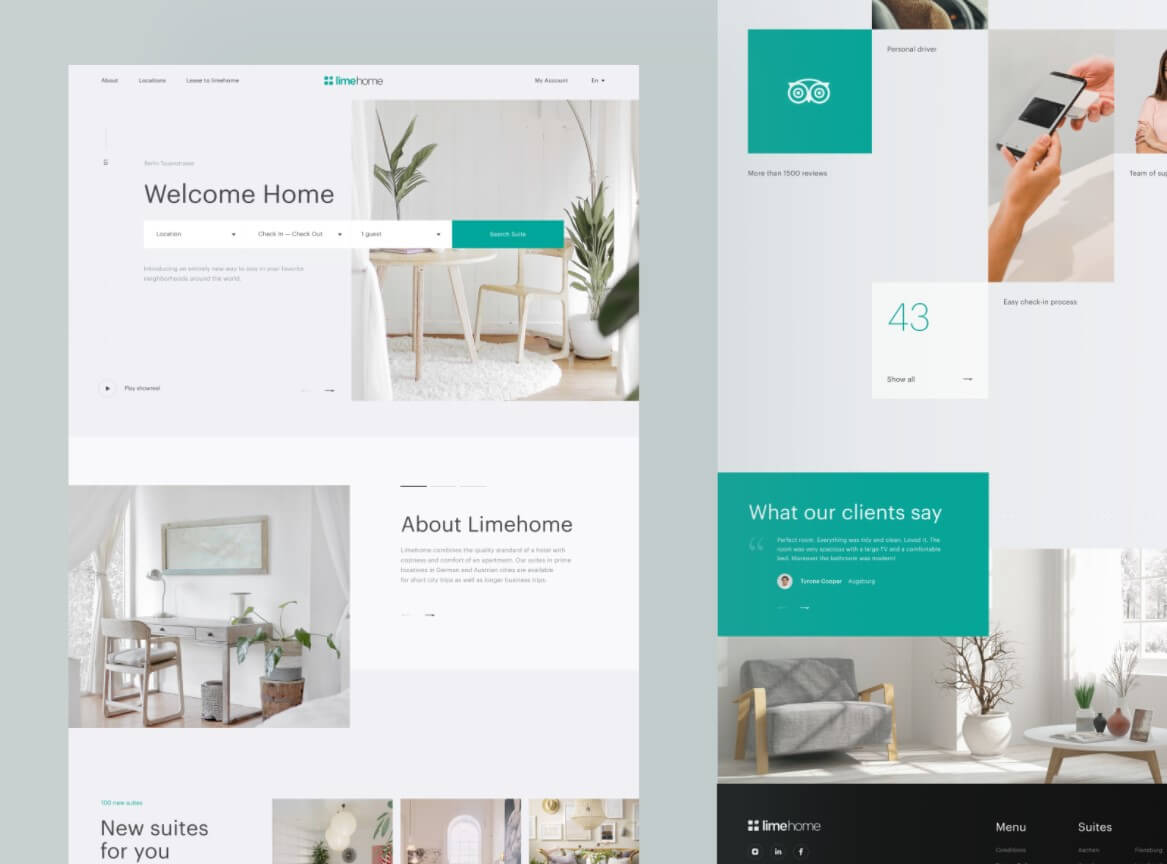
Conclusion: The Importance of Modern Website Design in 2025
In summary, modern website design is more crucial than ever in a competitive digital landscape. The drive for attention in the first few seconds can determine the fate of a business online. By embracing the principles of clean layouts, intuitive navigation, and impactful color schemes, businesses can significantly improve user engagement and retention. As we advance into 2025, there is no doubt that an effective website design will be intrinsic to overall success. Essential takeaways from modern design principles include:
– The need for responsive and accessible website designs that cater to diverse user needs.
– The integration of minimalist and bold designs can enhance user experiences by balancing aesthetics with functionality.
Furthermore, understanding industry-specific requirements allows for tailoring designs that resonate with target audiences. With evolving technologies and user expectations, staying updated with trends like dark mode or sustainable practices is vital. The adaptability of modern website designs not only aids businesses in standing out but also ensures that they remain aligned with consumer preferences. Key recommendations for businesses looking to enhance their digital presence are:
– Invest in performance optimization to improve load times and overall user experience.
– Regularly assess and update design strategies to meet emerging trends and user behavior changes.
Final Thoughts on Transforming Digital Presence
Ultimately, modern website design is an ongoing journey; it necessitates a commitment to continuous improvement and adaptation. By leveraging the comprehensive insights gleaned from modern design examples, businesses and designers can craft compelling online experiences that captivate and convert visitors. The guide’s exploration of diverse design trends not only highlights the aesthetic potential of websites but also emphasizes the necessity for functionality in achieving business goals. Key reflections to consider include:
– Modern design trends will continue to evolve, underscoring the importance of ongoing learning and adaptation in web design.
– Clean and engaging homepage designs can effectively communicate value and encourage user interactions.
To convert digital strategy into tangible results, it’s essential to implement the best practices outlined in the examples. From emphasizing user experience to fostering an engaging brand identity, modern web design serves as a powerful tool for transformation. As businesses gear up for the digital challenges of 2025, adopting these principles will be critical to elevating their online presence and driving sustainable growth. Embracing modern website design can ultimately lead to stronger customer relationships and increased brand loyalty. Consider these aspects moving forward:
– Focus on enhancing user experience through thoughtful design choices.
– Use analytics to evaluate website performance and inform design iterations.

